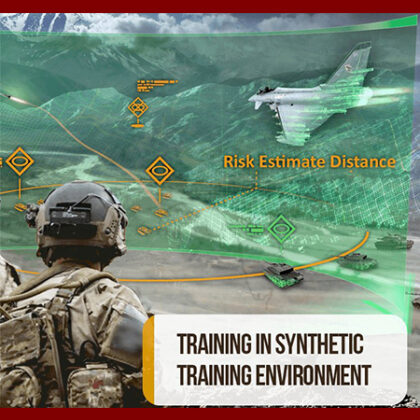
Description
Focus Area: Virtual Reality / Augmented Reality / Machine Learning
Estimated Budget Range: TBD
Submission Deadline: Thursday, December 31st, 2026 at 00:00, ET

SUMMARY
The U.S. Department of Defense seeks next-gen virtual and extended reality technologies for realistic war fighter simulation training and mission rehearsal elements, including combat environments, equipment maintenance, chemical and biological detectors, and reconnaissance. Just as flight simulators save money in terms of aircraft use, other virtual reality in military training applications provide similar cost savings. A single synthetic environment presents a huge opportunity for collective training, bringing crucial battlefield experiences without the challenges and constraints of live training and its limited warfare scenarios. Key is understanding all of the human, task, and display requirements in order to provide the appropriate information with a suitable display configuration.
Patriot Labs is interested in virtual-reality (VR), augmented-reality (AR), and mixed-reality (MR) equipment and training platforms that can be applied to military mission planning and scenario training. Specific to training, the challenge is to simulate realistic operations in a controlled environment and be able to deploy these training exercises at scale to the operational force – across a range of complex scenarios. This may include information pipelines that are multidimensional, multi-format, and context sensitive to the training environment.
For purposes of this CFI, solutions should support a single synthetic environment to enable air, land, sea, space and cyber forces to plug in and train together in one virtual world. Military and defense focused categories of interest include advanced virtual simulations for (i) flight simulation; (ii) ground vehicle simulation; (iii) equipment familiarization training; (iv) design, optimization, and maintenance of defense equipment; and (v) remote collaboration on sensitive defense projects or military missions. Proposed approaches should generate benefits that include, not limited to, natural actions and movements with AR/VR hardware; train anytime anywhere for any situation with all-in-one VR headsets; real-like training without the risks; scalable and adaptable VR simulations; detailed 3D reviews in different viewpoints; and reduced costs for training and engineering.
Provider capabilities may also include support for custom operational environments; image and data fusion; flexible deployment options; warfighters scenarios operating on foot or in vehicles; reconnaissance; chemical and biological detectors; uncrewed/autonomous vehicles; after-action reports; and multiple perspectives. Special consideration given to technologies that support (i) a common extended-reality environment accessible to users at different physical locations; (ii) real-time cross-platform accessibility; (iii) communication methods for unclassified and classified environments; and (iv) alternatives to prevent need to transmit classified information. Being able to use the data generated from simulation to provide performance insights and tailor training for individuals or groups is highly desirable.

